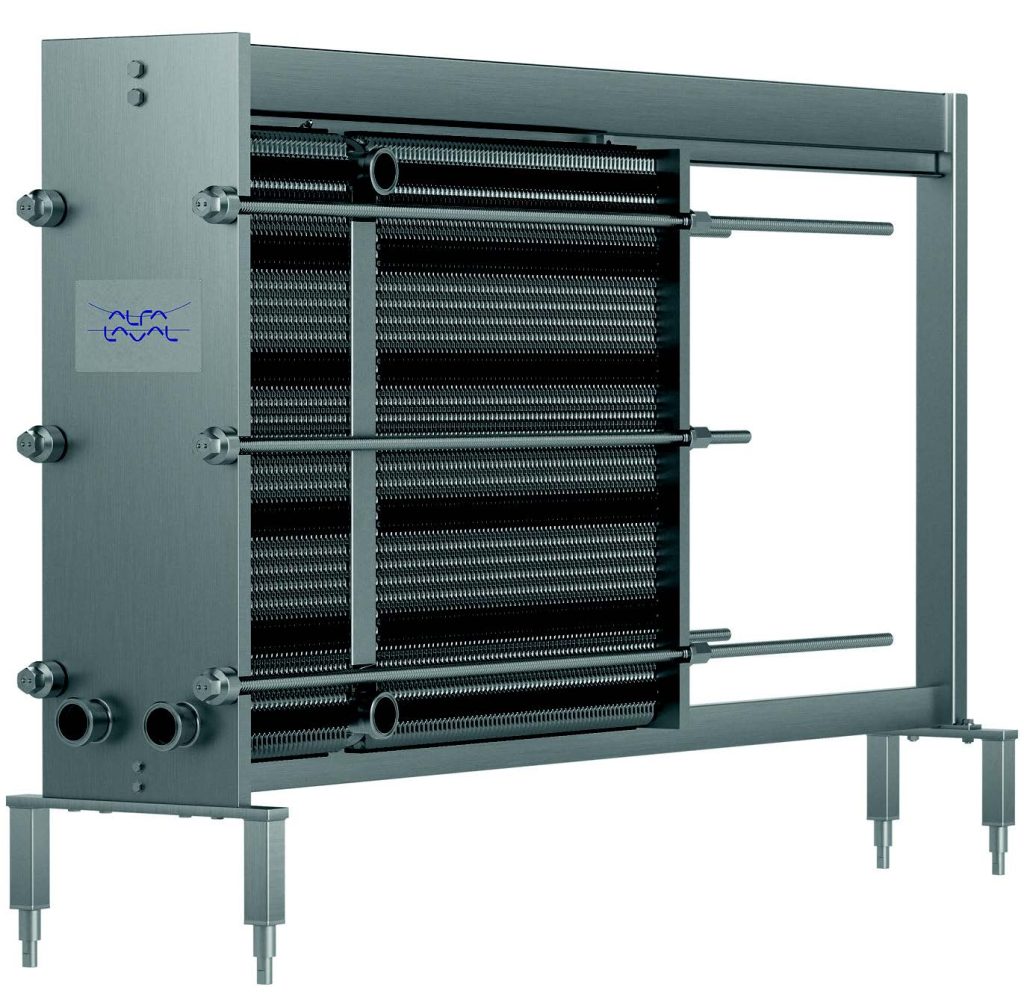Alfa Laval’s innovative Hygienic WideGap heat exchanger provides an alternative to traditional technology, potentially reducing emissions by 50% in the processing of liquid foods with fibres and particles. This new line of heat exchangers highlights the company’s dedication to sustainability and food safety within the food processing industry.
Text & images by Alfa Laval
Engineered specifically for fluids containing fibres and particles, this innovative technology enables impressive energy savings and heat recovery, surpassing the limitations of traditional shell and tube heat exchangers. Designed for food processing applications, the hygienic WideGap is suitable for a wide range of products, ranging from pulp-filled juices and purées to crushed tomatoes, dressings, and even plant-based beverages.
How it works

Heat recovery is crucial for improving energy efficiency and reducing costs. The innovative plate pattern of the WideGap plate heat exchanger enables high heat recovery, even with high fibrous fluids. By running the plate heat exchanger product to product, heat transfer between fluids
is optimized, resulting in efficient heat recovery. This process achieves a close temperature approach, enhancing heat transfer efficiency. By capturing and utilizing heat from the outgoing fluid to preheat the incoming fluid, significant energy savings can be achieved.
The versatile hygienic WideGap plate heat exchanger for fluids with large fibres and particles can be designed for various applications. The unit can be configured with asymmetrical channels allowing fluids carrying sizable particles to smoothly flow through the wide channel. By rearranging the plates into a symmetrical channel, heat recovery and substantial energy savings are enabled. Moreover, with its ingenious port design, fibres effortlessly navigate the channels without risk of clogging, enabling uninterrupted processing operations.
WideGap plate heat exchangers vs shell and tube
When considering heat exchangers for food processing, the WideGap plate heat exchangers offer a versatile and cost-efficient solution compared to the traditional shell and tube design.
• WideGap plate heat exchangers have a smaller footprint, saving valuable fl oor space. This also means transport and installation costs are lower.
• The design is versatile enabling the capacity to be adjusted simply by adding or removing plates, all within the existing frame.
• Maintenance is easier since all heat transfer surfaces are easily accessible for inspection or mechanical cleaning.
• A specially designed plate pattern ensures a high degree of turbulence over the whole plate, which not only reduces fouling but also makes cleaning very effective.
Hygienic line
This range of premium plate heat exchangers optimizes process hygiene and energy efficiency. They are specifically developed for hygienic applications thus raising the bar on hygiene overall while reducing the carbon footprint for food, beverage, pharmaceutical and other manufacturers who demand outstanding performance and total efficiency.
About this Technical Story
This Technical Story was first published in Heat Exchanger World Magazine in July 2024. To read more Technical Stories and many other articles, subscribe to our print magazine.
Technical Stories are regularly shared with our Heat Exchanger World community. Join us and share your own Technical Story on Heat Exchanger World online and in print.

